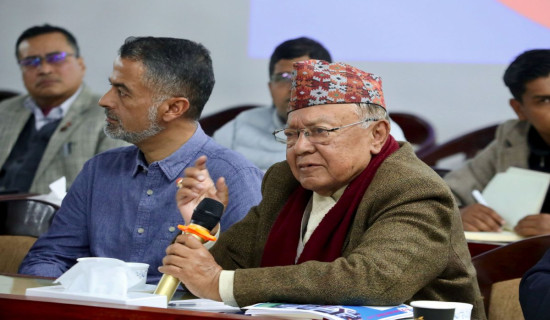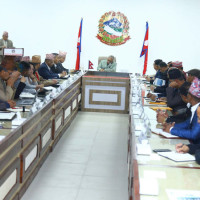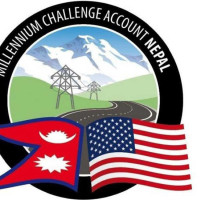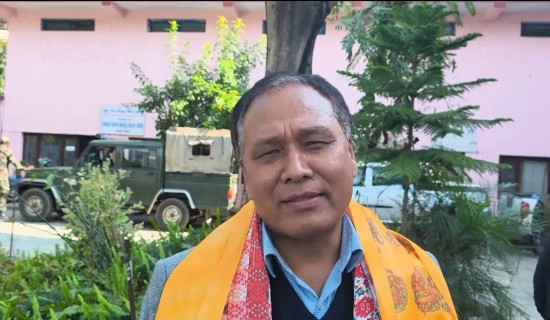- Tuesday, 23 December 2025
Constitution offers opportunities and contains challenges
By Pallav Bhusal,Kathmandu, Sept. 22: On September 19, the nation marked Constitution Day with grandeur, a significant occasion that reflects the long and difficult journey towards democratic rule and a representative constitution. In Kathmandu, the federal government hosted a main event at Tundikhel in the presence of top leaders including the President, Vice President, Prime Minister, Chief Justice, Speaker of the House of Representatives, and National Assembly Chairman.
Similar ceremonies took place across the country, with provincial capitals joining in the celebrations. For the first time, the Madhes government also enthusiastically commemorated the day, an important moment for a province that has often voiced discontent with the federal structure. A vibrant concert was also held in front of the Narayanhity Museum in Kathmandu, underscoring the public’s active participation in this year’s Constitution Day.
The celebrations marked a pivotal moment of reflection on how far Nepal has come since the promulgation of the 2015 constitution, which was drafted by the people’s representatives through the historic Constituent Assembly (CA). For many, it is a moment of pride, as the constitution symbolises the culmination of years of struggle, negotiations, and compromise. Nepal’s journey toward drafting the current constitution began long before 2015. A series of political upheavals, beginning with the democratic movement of 1951, laid the groundwork for the establishment of a CA. However, the prolonged conflict between the government and the Maoist insurgents from 1996 to 2006, known as the ‘People’s War,’ was the final push toward the establishment of a federal democratic republic. It was only after the first CA, elected in 2008, failed to deliver a constitution, that a second CA election in 2013, led by then Prime Minister Sushil Koirala, finally managed to accomplish the monumental task.
The road to a federal constitution was fraught with challenges. Weeks before its promulgation, the country faced violent protests in Tikapur, Kailali, and the Madhes region, largely seen as orchestrated attempts to thwart the new constitutional framework. Moreover, external pressures, sought to delay its implementation. Nepal’s refusal to yield resulted in a painful blockade that affected the nation for months. Yet, the resilience of the people and the political leadership prevailed. In the aftermath of the devastating earthquake in 2015, a historic moment of unity between the Nepali Congress, the CPN-UML, and the Maoist Centre enabled the promulgation of the new constitution, making the event a symbol of perseverance and unity against both internal and external forces.
“Many forces, both from within and outside the country, tried to prevent this constitution from being born,” said constitutional expert Kashiraj Dahal, as he reflected on the turbulent period leading up to the promulgation. “But the people’s determination and the unity among political forces finally allowed the dream of a federal constitution to be realised,” he said.
Since its inception, the 2015 constitution has facilitated major political transformations in Nepal. Two successful general elections have been held, and federalism has taken root through the formation of provincial governments in all seven provinces. Local elections have also been conducted twice, with 753 local levels now functioning across the country, solidifying the framework of decentralised governance. Federalism, inclusion and republicanism, the three hallmark features of the constitution, have reshaped the country’s political landscape.
However, despite the achievements, debates surrounding constitutional amendments have surfaced once again. The current coalition government, formed by the Nepali Congress and CPN-UML, is pushing for reforms, citing the need to amend the electoral system to ensure political stability. The debate is not without controversy. While some parties, including the Maoist Centre, oppose the proposed changes, many argue that the current system is a source of the political instability Nepal has faced in recent years.
“The electoral system alone isn’t responsible for the instability,” said Dahal when asked about the ongoing debate. “Yes, the system has its flaws, but there are deeper, more systemic issues at play here,” he said.
Nepal’s federal structure, a key component of the constitution, has faced both praise and criticism. On the one hand, it has brought government closer to the people, empowering local governments and provincial assemblies.
On the other hand, many feel that the system has not yet delivered on its promises. Provincial governments, in particular, have been criticised for their inefficiency and over-reliance on the central government. Dahal highlighted this in his critique, noting, “The provincial governments seem to exist merely to appoint ministers rather than to deliver real services to the people. Without clear delineation of powers and responsibilities between the central, provincial, and local governments, we are creating chaos rather than harmony.”
Dahal further elaborated on the challenges facing Nepal’s federal structure. “The financial autonomy of local governments is lacking. Most of the large funds are still controlled by the central government, leaving local bodies starved for resources. Moreover, the economic situation is dire, with the country saddled with Rs. 250 billion debt. Rising poverty, unemployment, and corruption are eroding public faith in the system,” he said. His concern was palpable as he pointed out that despite the constitutional guarantees of fundamental rights, access to basic services like healthcare and education remains out of reach for many citizens due to high costs.
The implementation of laws and policies has also been a sticking point. Numerous bills, including critical ones related to civil service, education, and healthcare, have been stalled in parliament.
“Our political parties often treat the constitution like a tool for power manipulation, looking for loopholes to maintain their grip on power rather than using it for the people’s welfare,” said Dahal. This practice, referred to by experts as “dirty tricks,” has severely hampered progress.
So how can Nepal overcome these challenges and ensure that its constitution works for the people? Dahal outlined several reforms that he believes are essential. First, the electoral system must be reformed to ensure competent and financially viable candidates. The constitutional council, which plays a vital role in appointments to various government bodies, must also be restructured to increase its effectiveness. “In many countries, the chair of the national assembly is also the vice president. Perhaps we could consider a similar model for Nepal,” said Dahal. He also raised concerns about the inclusion of the Chief Justice in the council, fearing a potential conflict of interest, as the judiciary must remain impartial.
Nepal’s judicial system, too, has faced criticism, particularly regarding the appointment of judges. “The process is highly politicised, with parties often selecting justices based on their own interests rather than merits,” said Dahal, calling for a change in the judicial council. He also advocated for a more effective parliamentary hearing committee and suggested reducing the number of members in both parliament and provincial assemblies. “We should focus on quality, not quantity,” he argued, adding that national assembly members should be chosen based on their expertise and contributions rather than their political affiliations.
Ultimately, Dahal stressed that the constitution must be people-centric and that political parties must reach a consensus on key national issues. “Institutional forbearance is crucial,” he said. “Without a shared vision for the country, we cannot hope to build a prosperous and peaceful Nepal.”
As the nation celebrated its ninth Constitution Day, there is a growing sense that while much has been achieved, there is still a long way to go in realising the full potential of the constitution. The challenges are many, but so too are the opportunities to build a better future for all Nepali.
Similarly, Radheshyam Adhikari, a constitutional expert and former Constituent Assembly member, highlighted that the original intent of Nepal’s federal system was to decentralise power. “We envisioned a system where provincial governments could operate independently, yet the central government still wields significant control. This centralisation undermines the true potential of federalism,” he said.
Adhikari argues that provincial authorities need more decision-making power over local matters. “While the federal structure offers opportunities for local leaders to represent their constituencies, their effectiveness is diminished when the central government overrides their authority. True federalism will only flourish with genuine autonomy,” he said.
Despite these challenges, he acknowledges the constitution’s success in guaranteeing fundamental rights, such as equality, freedom of expression, and protection against discrimination. It also promotes inclusiveness by ensuring better representation for marginalized groups, including women, Dalits, and indigenous communities, thus fostering a more equitable society.








-square-thumb.jpg)







